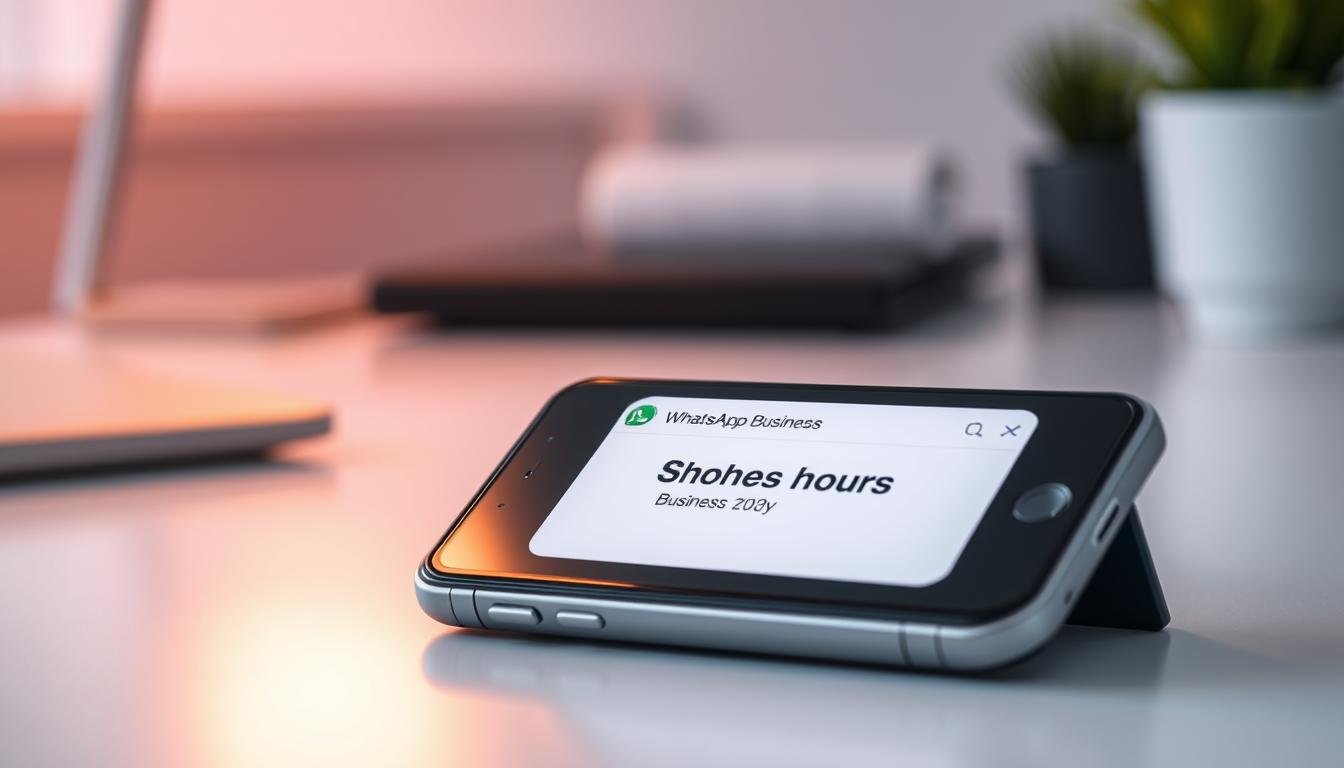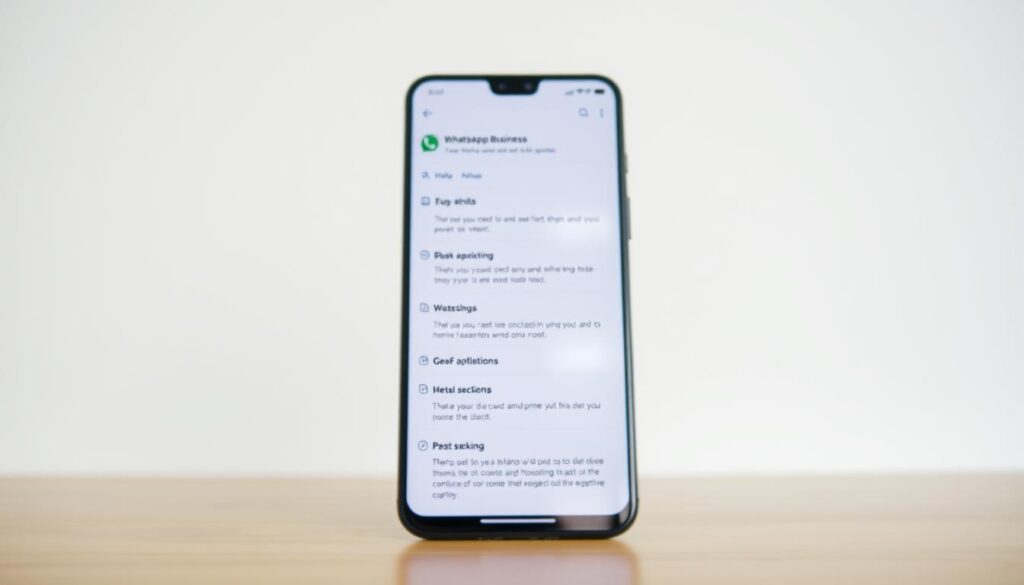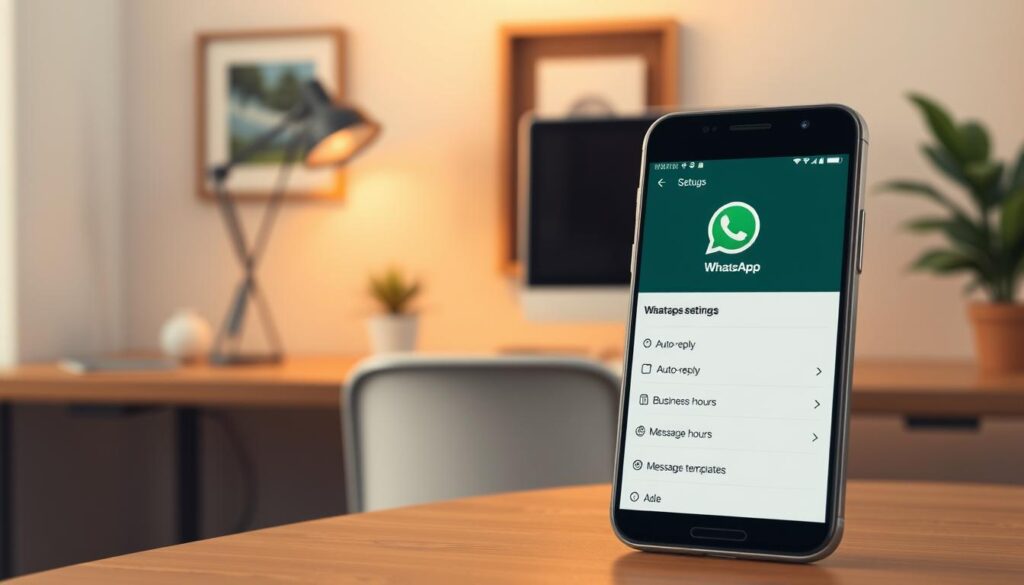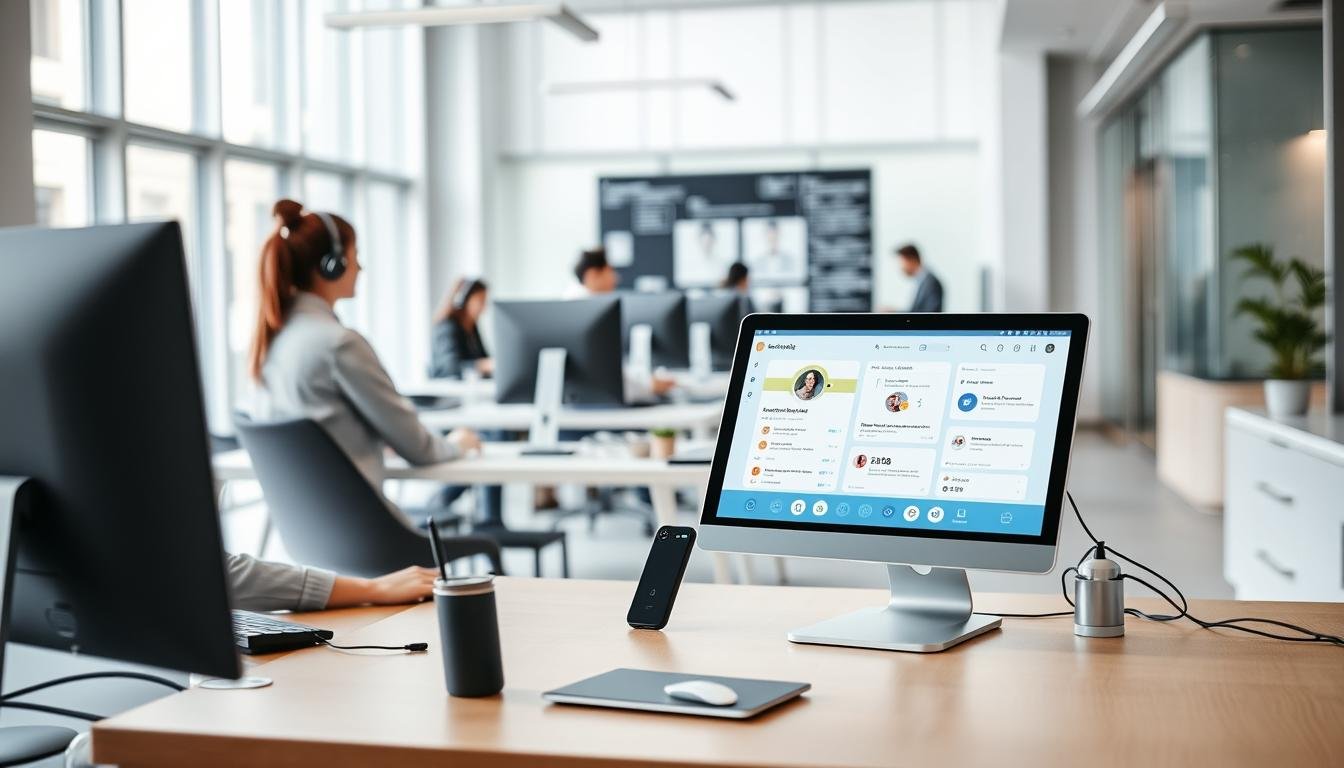In today’s fast-paced world, customers expect quick replies. Studies show that 78% of users want a response within an hour during specific periods. Failing to meet this demand can lead to lost opportunities and frustrated clients.
Automated tools are becoming essential for businesses to maintain consistent communication. They ensure that no message goes unanswered, even outside regular times. This not only boosts customer satisfaction but also improves operational efficiency.
With over 2 billion users, this platform has become a global leader in messaging. Leveraging its features can help businesses stay ahead. Integrating advanced automation solutions can even increase lead conversion rates by up to 8 times.
Key Takeaways
- Customers expect quick replies within an hour during specific times.
- Automated tools ensure consistent communication and improve efficiency.
- Instant responses can boost lead conversion rates significantly.
- Advanced integrations offer seamless automation for businesses.
- Using the right tools enhances customer satisfaction and brand consistency.
Introduction to WhatsApp Auto Reply
Efficient communication is key to meeting customer expectations in the digital age. With over 175 million business messages handled daily, tools like this platform have become essential for modern enterprises. Automated responses ensure that no query goes unanswered, even during peak periods.
What is WhatsApp Auto Reply?
Auto-reply is a feature that sends programmed responses based on specific triggers, such as incoming messages or predefined time parameters. These can include greeting messages, away messages, and follow-up templates. For example, an e-commerce brand reduced its response time from 12 hours to just 2 minutes using this feature.
Why Use Auto Reply for Business Hours?
Automated replies help maintain SLA compliance during high-volume periods. They are particularly useful for holiday closures, after-hours support, and managing customer expectations. Studies show that 63% of customers prefer messaging over email for support, making timely responses crucial.
Case studies, like Brevo’s abandoned cart automation, demonstrate how these tools can boost efficiency. By integrating such solutions, businesses can ensure consistent communication and enhance customer satisfaction.
Setting Up WhatsApp Auto Reply
Automated messaging solutions are transforming customer interactions. Businesses can choose between the WhatsApp Business App and the WhatsApp Business API to streamline their communication. Each option offers unique features tailored to different needs.
Using the WhatsApp Business App
The WhatsApp Business App is ideal for small businesses. It allows users to set up away messages and quick replies directly from their account. Navigate to Settings > Business Tools > Away Messages to configure responses.
However, this app has limitations. It supports only three message template types and lacks CRM integration. For businesses with higher volumes, the WhatsApp Business API is a better fit.
Using the WhatsApp Business API
The WhatsApp Business API offers advanced features like 15+ trigger events and dynamic content insertion. It requires a verified business profile and approved templates, which Meta reviews within 24-72 hours.
Integration is seamless with tools like Brevo’s drag-and-drop builder. This API is perfect for enterprises handling thousands of daily inquiries. A retail chain, for example, successfully manages over 10,000 messages daily using this solution.
While the app is free, the API uses conversation-based pricing. Businesses should weigh their needs and budget when choosing between these options.
Benefits of WhatsApp Auto Reply for Business Hours
Streamlining communication has never been more critical for modern enterprises. Automated tools are transforming how companies interact with their audience, ensuring timely and efficient responses. These solutions not only enhance customer satisfaction but also optimize operational workflows.
Improving Customer Service
Automated replies ensure that no query goes unanswered, even during peak periods. Studies show that companies using these tools see a 40% reduction in support tickets. This allows support teams to focus on complex issues, improving overall service quality.
Quick responses also lead to faster resolution times. Data reveals that automation can reduce resolution times by 65%, ensuring customers get the help they need without delays.
Saving Time and Resources
Automation frees up valuable time for support teams. By handling routine inquiries, these tools allow staff to focus on strategic tasks. This reallocation of resources boosts productivity and reduces operational costs.
For example, a SaaS company implemented holiday auto-replies and saw its Net Promoter Score (NPS) increase by 35 points. This demonstrates the tangible benefits of automation in saving time and enhancing efficiency.
Personalizing Customer Interactions
Personalization is key to building strong customer relationships. Automated tools can insert customer names or reference purchase history, making interactions feel tailored. 92% of customers report higher satisfaction with personalized responses.
Advanced integrations also offer multilingual support, catering to a global audience. This ensures that every customer feels valued, regardless of their language or location.
Step-by-Step Guide to Configure Auto Reply
Setting up automated responses can transform how you manage customer interactions. This guide walks you through the process, ensuring your account is optimized for timely and efficient communication.
Step 1: Accessing the Settings
Start by opening the WhatsApp Business App. Navigate to the Settings menu, then select Business Tools. Here, you’ll find options to manage your replies and other features.
Step 2: Setting Up Away Messages
Choose the away messages option to configure responses. You can schedule these for Always, Custom, or Outside Hours. This flexibility ensures your audience receives appropriate replies based on your availability.
Step 3: Customizing Responses
Customize your messages to align with your brand voice. Use dynamic content like {FirstName} for personalization. Ensure your templates comply with guidelines, such as the 1024-character limit and emoji rules. Test your setup internally before finalizing.
For global operations, manage time zones effectively to avoid delays. Regularly review and update your templates every two weeks to keep them relevant and compliant.
Best Practices for WhatsApp Auto Reply
Effective communication strategies are essential for maintaining customer engagement and satisfaction. Automated messaging tools can significantly enhance your company’s ability to respond promptly and efficiently. However, success depends on implementing the right practices.
Choosing the Right Message Templates
Selecting appropriate templates is crucial for effective communication. Use a Clarity-Value-CTA structure to ensure your messages are clear, valuable, and actionable. Avoid non-compliance issues, as 43% of templates are rejected due to guideline violations.
Analyze historical chat data to identify peak hours and tailor your templates accordingly. A/B testing different message variants can help determine what resonates best with your audience. Always include a strong call-to-action to guide the next steps.
Timing Your Auto Replies
Timing plays a critical role in customer satisfaction. Studies show that responses within a 5-minute window significantly improve lead conversion rates. Schedule your replies based on peak activity hours to maximize engagement.
For global operations, consider time zone differences to avoid delays. Regularly review your response timing to ensure it aligns with customer expectations and operational needs.
Monitoring and Adjusting Responses
Continuous monitoring is key to optimizing your messaging strategy. Set up a performance dashboard to track metrics like open rates and response times. This data helps identify areas for improvement and ensures consistent performance.
Implement escalation protocols for urgent queries flagged as “URGENT”. For industries like finance or healthcare, include legal disclaimers to comply with regulations. Adapt your templates for crisis scenarios, such as system outages, to maintain trust and transparency.
Examples of Effective Auto Reply Messages
Crafting the right message can make all the difference in customer engagement. Whether it’s a greeting message, an away message, or a follow-up, the tone and content matter. Here are some proven examples to inspire your strategy.
Greeting Messages
Start conversations on the right note with a warm greeting message. For instance, “Hi {Name}, thanks for reaching out! How can we assist you today?” This approach personalizes the interaction and sets a positive tone.
Another example: “Welcome back, {Name}! We’re here to help with any questions.” These messages make the customer feel valued and encourage further engagement.
Away Messages
When you’re unavailable, away messages keep communication clear. For example, “Thanks for your message! Our team is currently offline but will respond by 9 AM tomorrow.” This sets expectations and maintains trust.
For holidays, try: “Happy Eid! Our team returns on 4/10. For urgent issues, visit help.center/123.” This ensures the customer knows when to expect a response.
Follow-Up Messages
Follow-ups are crucial for closing the loop. A simple “Hi {Name}, thanks for your order #12345! Here’s your shipping update: [link].” This keeps the customer informed and reduces inquiries.
For post-purchase engagement: “We hope you’re enjoying your purchase! Share your feedback here: [link].” This encourages reviews and builds loyalty.
Using these templates can enhance your communication strategy, ensuring every interaction is meaningful and efficient.
Conclusion
Implementing automated solutions can significantly enhance your communication strategy. From setup to optimization, these tools streamline interactions and ensure timely responses. Studies show that adopting automation can yield a 24-month ROI, making it a smart investment for any business.
For businesses starting with the basic app, upgrading to advanced API solutions offers greater flexibility and scalability. Ensure compliance by testing and monitoring your templates regularly. Upcoming features, like AI-powered response suggestions, will further enhance efficiency.
Take advantage of a free template audit to refine your approach. Regular maintenance, including biannual policy reviews, ensures your system remains effective and compliant. By prioritizing these steps, you can deliver exceptional service and build lasting customer relationships.







